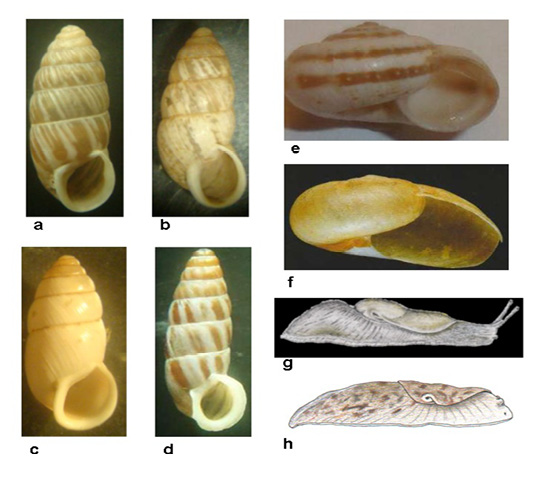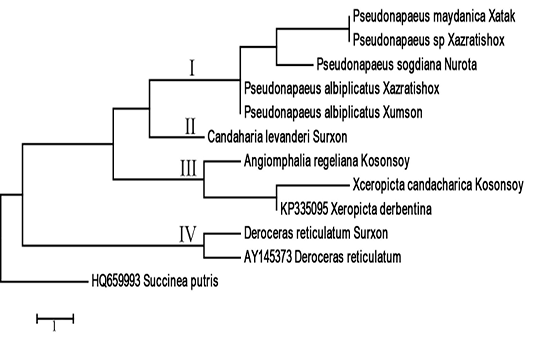Morphological and Molecular Identification of Land Molluscs as Intermediate Hosts of Lungworms
Morphological and Molecular Identification of Land Molluscs as Intermediate Hosts of Lungworms
Abdurakhim E. Kuchboev1*, Mehmonjon Kh. Egamberdiyev2
Survey sites divided into four regions (Surkhandarya, Jizzakh, Tashkent, and Namangan) in the foothill and mountain areas of Uzbekistan.
Shells: a - Pseudonapaeus maydanica; b - P. albiplicatus; c - Pseudonapaeus sogdiana; d - Pseudonapaeus sp.; e – Xeropicta candacharica; f - Angiomphallia regeliana; Appearance: g - Candaharia levanderi; h - Deroceras reticulatum.
Phylogenetic tree based on a combined dataset of 18S and ITS-1 rDNA sequences of molluscs with a total of 1338 nucleotide sites constructed using the Maximum Likelihood method and the general time reversible model (GTR +1). The tree has been rooted using Succinea putris (HQ659993.1). I - Buliminidae, II - Hygromiidae; III - Parmacellidae; IV - Agriolimacidae.









